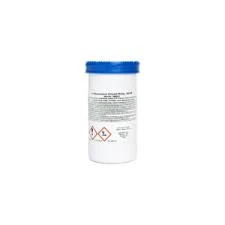Chemicals Used for Water Flocculation and Treatment Processes in Environmental Management
The Role of Water Flocculation Chemicals in Water Treatment
Water is an essential resource for survival, and ensuring its purity is crucial for public health and environmental sustainability. Contaminated water sources can lead to numerous health problems, making water treatment processes pivotal. One of the essential techniques in water purification is flocculation, where specific chemicals are used to aggregate suspended particles, facilitating their removal. In this article, we will explore the significance of water flocculation chemicals, their types, mechanisms, and applications.
What is Flocculation?
Flocculation is a process where fine particulates are agglomerated into a floc, a clump of particles that can be easily removed from water. This process is critical in various water treatment settings, including drinking water facilities, wastewater treatment plants, and industrial operations. The primary goal of flocculation is to coagulate particles that are often too small to be removed by conventional filtration, thus improving water clarity and quality.
Types of Flocculation Chemicals
Flocculation involves various chemicals that serve different purposes. The most common types include
1. Coagulants These chemicals neutralize the electric charges on suspended particles, encouraging them to come together into larger aggregates. Common coagulants include aluminum sulfate (alum), iron(III) chloride, and polyaluminum chloride. Depending on the specific water conditions, the choice of coagulant may vary.
2. Flocculants Unlike coagulants, which primarily initiate particle aggregation, flocculants are polymers that enhance the stability of the formed flocs, aiding in their collection. Anionic and cationic polymers are used, with the selection based on the characteristics of the suspended particles and the desired floc size.
3. pH Adjusters The effectiveness of flocculation can be influenced by pH. Chemicals such as lime or sodium hydroxide may be used to adjust the pH of the water before the addition of coagulants, optimizing the conditions for particle aggregation.
4. Molecular Antibacterial Agents In some cases, the addition of chemicals with antibacterial properties can help in controlling microbial contaminants in conjunction with the flocculation process.
Mechanism of Action
water flocculation chemicals

The flocculation process consists of several stages coagulation, floc formation, and sedimentation. Initially, coagulants are added to the water supply, where they neutralize the charges on the particles, leading to their agglomeration. Once the particles begin to clump together, the addition of flocculants enhances the size and weight of these clumps, allowing them to settle more rapidly.
During sedimentation, the larger flocs settle to the bottom of the treatment tank, where they can be removed. The supernatant water, now significantly clearer, can be further treated or directly used, depending on the intended application.
Applications of Flocculation Chemicals
Flocculation chemicals are utilized in various applications, emphasizing their importance in water treatment. Here are some common uses
1. Drinking Water Treatment Ensuring the safety of drinking water is paramount. Flocculation chemicals help remove particles, pathogens, and other contaminants, making the water safe for consumption.
2. Wastewater Treatment In wastewater treatment facilities, flocculation is integral to removing sludge and other pollutants before the wastewater is released back into the environment or treated further.
3. Industrial Applications Industries that require water in their processes, such as food and beverage production, paper manufacturing, and textiles, employ flocculation to recycle and purify water.
4. Mining Operations The mining industry faces challenges with water quality as well. Flocculation chemicals are used to treat process water and reduce the environmental impact of mining activities.
Conclusion
The use of water flocculation chemicals is a cornerstone of modern water treatment practices. By enhancing the removal of suspended particles and improving water clarity, these chemicals play a critical role in ensuring clean and safe water for various applications. As water scarcity and pollution continue to pose challenges globally, the development and optimization of flocculation technologies will be vital in addressing these pressing concerns. It is imperative to continue research in this field to refine existing methods and discover new, efficient solutions to ensure water quality for all.
-
Pbtc Scale InhibitorPBTC: A Scale Protector for Industrial Water TreatmentNewsAug.05,2025
-
Organic Phosphonate: An Efficient Defender in the Field of Scale InhibitionNewsAug.05,2025
-
Hydrolyzed Polymaleic Anhydride: Green Pioneer in Scale Inhibition FieldNewsAug.05,2025
-
PAPEMP Polyamino Polyether Methylene Phosphonic Acid For SaleNewsAug.05,2025
-
Flocculant Water Treatment: A Pioneer in Purification in the Field of Water TreatmentNewsAug.05,2025
-
Benzyl Isothiazolinone: An Efficient and Broad-Spectrum Antibacterial Protective GuardNewsAug.05,2025





